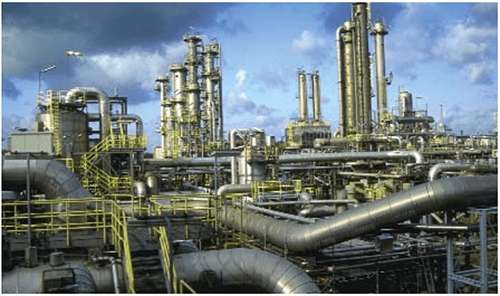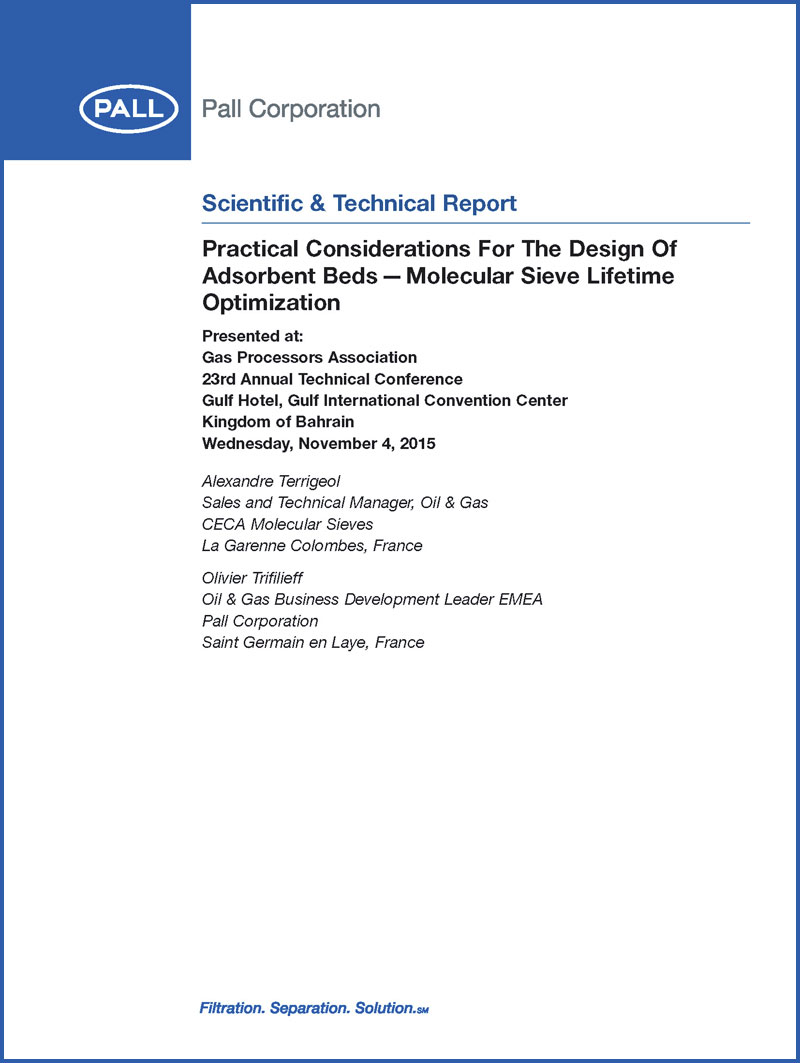Water Adsorbent Dehydration
Product: SepraSol™ Plus liquid/gas coalescers and Medallion™ HP liquid/gas coalescers
Process Description
The removal of water from natural gas (desiccant dehydration of natural gas), prevents formation of gas hydrates and subsequent fouling of critical downstream components, reduces corrosion, maximizes pipeline and process efficiencies, and protects water sensitive catalysts in refinery processes. In desiccant operations, common adsorbent materials include molecular sieves, silica gels and activated alumina.
The wet hydrocarbon gas enters the top of the adsorption tower and flows downward through the adsorbent where the water is adsorbed. The essentially dry hydrocarbon gas exits at the bottom and is ready for processing or sale. Most desiccant systems have two or more adsorption towers enabling one to be regenerated while the remaining tower(s) are in operation. Bed regeneration is accomplished by flowing heated dry gas upward so that contaminants adsorbed within the bed can be removed.
To maintain their effectiveness, desiccants must be protected from free water and liquid hydrocarbon contamination to achieve their anticipated 3-to-5-year life. Free water causes long term fracturing and dusting of the desiccant granules, while hydrocarbons burn onto the granules during regeneration, progressively reducing moisture removal capability.
Gas Plant Needs
• Achieve or exceed natural gas production quotas via reliable treatment of wet gases
• Maintain process reliability for consistency of production and minimization of downtime
• Provide consistent on-spec sales gas quality for water content
• Minimize desiccant bed degradation that can lead to premature water breakthrough
• Minimize pressure drop increase
Challenge
Desiccant bed degradation due to foreign material, such as glycol, amine, lube oil, corrosion inhibitors and solids, coating and plugging the pores of the adsorbent and preventing access to the large interior surface
Solution
Improve your dehydration productivity and reliability with effective liquid and solid removal upstream of the desiccant beds to protect against bed degradation and capacity loss.
• High efficiency SepraSol™ Plus liquid/gas coalescers and Medallion™ HP liquid/gas coalescers provide 99.999% removal at 0.3 microns per the DOP test and 1 ppb downstream per the modified ANSI/CAGI-400-1999 test procedure.
Challenge
Bed damage due to large ingression of liquid water, causing the bed to fracture
Solution
Protect against introduction of slugs of water by capturing these slugs upstream of the desiccant beds.
• The SepraSol Plus liquid/gas coalescer assembly has a dual sump provision that accepts most slugs without bypass or loss of removal efficiency.
• Pall’s full element oleophobically treated SepraSol Plus coalescers also recover very quickly, minimizing the pressure drop across the assembly.
Challenge
Damage to downstream process equipment due to entrainment of desiccant fines in the dry gas stream
Solution
Protect downstream equipment, such as compressors and catalyst beds through effective solids control downstream of the desiccant beds. • The DGF Dry Gas Particulate Filter removes desiccant fines and other contaminants from the dry hydrocarbon gas stream before it enters the pipeline, compressor, or catalyst bed.
Experience Matters
Don’t take our word for it. Just ask the thousands of oil and gas engineers around the world why Pall is their supplier of choice for filtration and separations solutions. Let them tell you how our extended filter life and simple maintenance protocols save them time that can be spent on value-add process improvements. Ask them about the reliability and consistent output from the Pall systems installed in their critical processes. You don't want to spend time worrying about your filters and coalescers, and we don’t want you to either.





